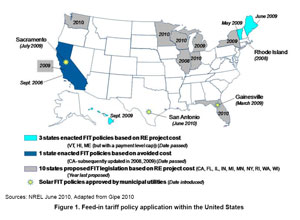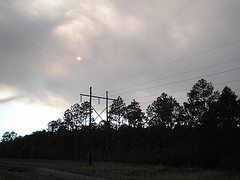Why build nukes when wind can provide 3/4 of our power?
While Southern Company claims to be
“a company that is engaged in offering solutions, not just rhetoric”,
yet
does nothing about wind off the Georgia coast,
 researchers in far California have demonstrated we can get
3/4 of all needed east coast electricity from offshore wind.
researchers in far California have demonstrated we can get
3/4 of all needed east coast electricity from offshore wind.
Bjorn Carey wrote for Stanford Report 14 September 2012, Offshore wind energy could power entire U.S. East Coast, Stanford scientists say
A new analysis by Stanford researchers reveals that there is enough offshore wind along the U.S. East Coast to meet the electricity demands of at least one-third of the country.
The scientists paid special attention to the Maine-to-Virginia corridor; the historical lack of strong hurricanes in the region makes it a favorable site for offshore wind turbines. They found that turbines placed there could satisfy the peak-time power needs of these states for three seasons of the year (summer is the exception).
“We knew there was a lot of wind out there, but this is the first actual quantification of the total resource and the time of day that the resource peaks,” said Mark Z. Jacobson, a professor of civil and environmental engineering at Stanford who directed the research. “This provides practical information to wind farm developers about the best areas to place turbines.”
 Mark Z. Jacobson already worked out a framework for
powering the entire world from wind, water, and sun alone.
The late
John Blackburn, Ph.D., showed us how
to power North Carolina with sun, wind, and hydro,
plus less natural gas than NC uses now.
Now Jacobson is working out the details of implementation.
Mark Z. Jacobson already worked out a framework for
powering the entire world from wind, water, and sun alone.
The late
John Blackburn, Ph.D., showed us how
to power North Carolina with sun, wind, and hydro,
plus less natural gas than NC uses now.
Now Jacobson is working out the details of implementation.
-jsq



















 Well, they may not listen, but we the voters have an opportunity right now
Well, they may not listen, but we the voters have an opportunity right now